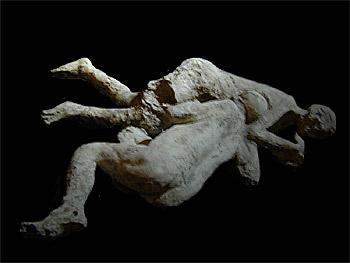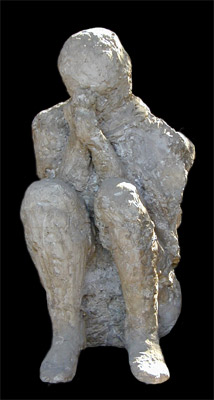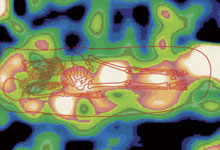

Introduction to Archaeology and Palaeoanthropology:
Humanity's Journeys
Dr. Kathryn Denning
Anth 2140, Sept 2005 - Apr 2006
Viking Helmet, Gjermundbu, Norway, c. 900 AD.
11 Oct 2005... Welcome!
Plan for the day
1 Course business/ announcements... quiz, Writing Assmt 1
2 Anthropology and Archaeology
3 Back to the Norse
4 General review of sites and methods
Course business/ Announcements
Our second textbook - the course kit - is now at the bookstore
Syllabus - if you don't have the list of readings for this term (handed out in last class), come and get one
Schedule
Tues Oct 11: lecture and quiz review. Reading from kit: Putting the World in Perspective, The Essence of Anthropology, and The Nature of Anthropology
Weds Oct 12: tutorial and QUIZ #1, on all readings to date. Format: very short answer, fill in the blank, label the diagram. Review guidelines are posted here.
Tues Oct 18, Weds Oct 19: for lecture and tutorial next week, read the course kit: Biology and Evolution, and The Living Primates
Weds Oct 26: Writing Assmt 1 is due in tutorial.
Writing Assmt 1
(extra handouts available outside KD's office, Vari 2029)
http://www.yorku.ca/kdenning/+AllCourses/anthroref.htm
2 Anthropology and Archaeology
General principles... anthropology.. the study of humankind everywhere, throughout time.
Various subfields...
Key aspects of the orientation: looking for similarities and differences cross-culturally...maintaining critical awareness of assumptions... striving not to be culture-bound... interdisciplinary... humans as biological and cultural entities... diversity
History of Archaeology
Nothing lasts forever – graffiti from a wall in Pompeii.
Is it true that on earth one lives?
Not forever on earth, only a little while.
Though jade it may be, it breaks;
Though gold it may be, it is crushed;
Though it be quetzal plumes, it shall not last.
Not forever on earth, only a little while.
- Nezahualcoyatl of Texcoco (Aztec)
Are Anthropology and Archaeology Sciences?
It depends on your definition.
But they do use rational methods of investigation.
Recapping from three weeks ago: Archaeology: 10 Principles
1) Archaeology is about buried treasure…. but maybe not the treasure you think!
2) "Truth" in archaeology changes.
3) Archaeology is rational but not perfectly so.
4) The past is powerful and should be treated with care.
5) The archaeological record includes a lot of "noise" but also messages -- messages meant for other people, but also for us.
6) “The past is a different country. They do things differently there.”
7) They even think differently there. Even our most basic categories of thought can be completely transcended.
8) Literature and history can tell us what people wrote. Archaeology can tell us what they did.
9) We need to cultivate ignorance about the past, as well as wisdom. We often have to unlearn what we think we know about the past. We have images…. they come from somewhere and they are neither neutral nor accidental.
10) Past people were… people.
Recapping from two weeks ago: A few more truths about archaeology
1. Labelling is necessary – we have to have words to talk about things and people and times – but always problematic.
2. People in the past had a past, a present, and a future.
3. How you talk about something can really shape how you think about it.
4. What you bring to archaeology will determine partly what you see.
So what's archaeology really all about?
Back to the case of the Norse.
Doing Archaeology: Sites and Methods
This book is focused on taking you through 4 major developments in human prehistory:
- origins of humankind
- evolution of archaic humans like Homo erectus, origins of anatomically modern people like ourselves
- origins of more complex subsistence or food adaptations – food production
- origins of urbanized, literate civilization/state organized societies
Then, in the second part of the course we’ll go into more detail about those civilizations.
But how do we know anything at all about these developments? And what do we want to know about them?
The objectives of archaeology
Culture History – What Happened, Where, and When?
Ancient Lifeways – ancient human behaviour, i.e. people not artifacts. What did they do? How did they acquire food (subsistence), how did they relate to their natural environment, how did they interact with each other, what was their social organization, what were their religious beliefs?
Explaining Cultural Change – cultural processes, e.g. the emergence of agriculture and cities, the collapse of civilizations, the spread of new ones, how big cultural systems work and how people are agents of change within them
An Archaeologist’s Ethical Responsibilities
“The archaeologist has one primary and overriding priority: to preserve and conserve the material remains of the past for future generations. Archaeological sites and their contents are a unique record of our forebears in every part of the world…. this archive of the past, the archaeological record, is finite. Once disturbed or excavated, the record is gone forever. Conserving this priceless asset is our greatest responsibility to the past…” (Fagan 2004:31)
- n.b. we destroy evidence in the process of recovering it
p. 37
Stewardship
Consultation
Avoiding commercialization
Public education
Publication
Preservation
Care!
The Research Process (in an ideal world)

The Archaeological Record
Sites, features, artifacts
Preservation
RECOVERING EVIDENCE OF BODIES EVEN AFTER THE BODIES ARE GONE
e.g. Casts of people's bodies at Pompeii



"Magnetic memories. Skeletons often dissolve when buried in acidic soils. Now archeologists have shown that they can detect long-decayed remains by measuring the faint magnetic signal left from hemoglobin and other sources of iron, which microbes can magnetize. This image, published in Archaeological Prospection, shows the magnetic signal from soil covering a roughly 1200-year-old Anglo-Saxon skeleton from Suffolk, United Kingdom. " (Science online, 2004)
PRINCIPLE OF SUPERPOSITION

LAW OF ASSOCIATION IN ARCHAEOLOGY

METHODS OF RETRIEVING DATA
- accidental discoveries
- field survey
- remote sensing and GIS
- excavation (vertical, horizontal, test pits)
DATING
- relative chronology - placing things in order
- chronometric dating - actually knowing their chronological age
RELATIVE DATING METHOD: SERIATION

The major absolute/chronological (rather than relative) dating techniques

Dendrochronology

TIME FOR US ISN'T THE SAME AS TIME FOR EVERYONE ELSE....

